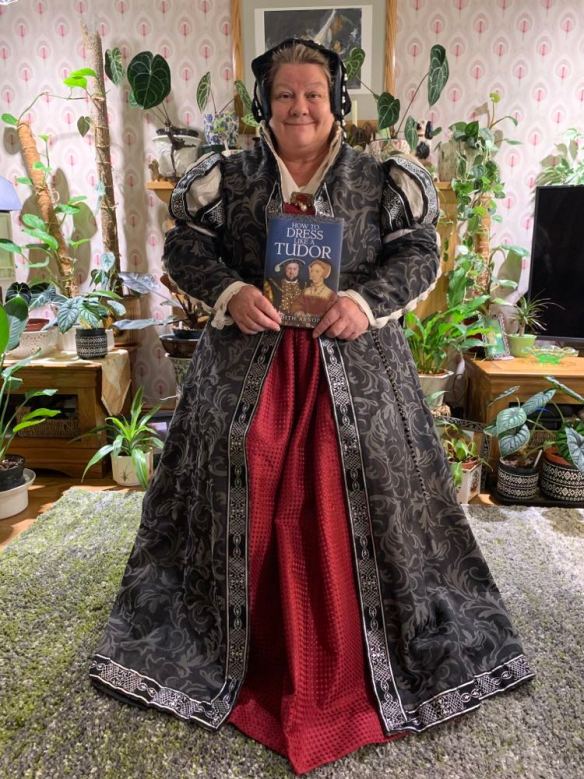Today I’m offering a warm welcome to Paul, the son of Michael Hodgetts who wrote Secret Hiding Places first published in 1989. Given my views about the religious beliefs of the original designer of the Unstitched Coif project from 2023, this re-publication seems serendipitous as does the idea of hiding in plain sight.
The English Reformation was given official approval because King Henry VIII wished to divorce his first wife, Katherine of Aragon, in order to marry Anne Boleyn. Inevitably, Henry’s marital disharmony led to the mid Tudor crisis of which religion was a part and to difficulties for those of his daughter, Elizabeth I’s, subjects who chose to remain Catholic. So, over to Paul for a fascinating guest post.
_____________________________________
Priest-holes are a familiar feature of the English country house. Some are on show to the public – King Charles II’s hide at Boscobel has been a tourist attraction for nearly 300 years – and at Harvington Hall in Worcestershire children and small adults can squeeze into one of the hides. But while most people are aware that they were built to shelter Catholic priests at the end of the sixteenth century, and the name of Nicholas Owen has become well known, very few realise quite how many of these strange spaces there originally were or know of the carefully planned strategy behind them.
From almost the start of the reign of Elizabeth I, Catholic services were supressed and fines could be imposed for non-attendance at the Parish Church, but for the first fifteen years or so the laws were not enforced very strictly. The early 1570s saw a tightening, with searches and arrests becoming more frequent: the first record of a purpose-built hide is in 1574 and in 1577 the first execution took place of an overseas-trained priest. The Jesuits arrived in 1580 but the real turning point was after 1585, when a new law made, not only the priests, but also their hosts, liable to execution. A year later, the government was winning the war: fewer than one-third of the 300 priests who had returned from abroad over the previous twelve years were still at work and the tempo of arrests and executions was increasing.
But in July 1586 at a week-long conference organised by the only three Jesuits then at liberty (William Weston, Henry Garnet and Robert Southwell) and attended by other non-Jesuit priests and some young noblemen, a new strategy was born. Instead of priests moving around constantly as they had previously been doing, each would now have a base of operations in a country house and a network of sympathisers would be set up to smuggle incoming priests to holding points until a suitable base could be found for them. Because the priests would be henceforth static, these houses also had to be equipped with hides. Most such houses would only need a single hide, but the holding points would need more, to be able to conceal larger numbers of priests. Weston was arrested two weeks later and spent the next seventeen years in prison, but Garnet and Southwell put the scheme into effect and it is not an exaggeration to say that Catholicism in England and Wales would not otherwise have survived. Southwell, who had relatives all over the Sussex and Hampshire aristocracy, created the ‘underground railroad’ whilst Garnet took into his service a carpenter from Oxford called Nicholas Owen with a very particular set of skills – the ability to create hidden spaces within the fabric of buildings.

have been built by Nicholas Owen.
All three eventually met grisly deaths: Southwell was arrested in 1591 and executed four years later and Owen and Garnet were arrested in the crackdown that followed Gunpowder Plot. Owen was tortured to death in the Tower of London without revealing any of his hides and Garnet was hanged, drawn and quartered. But the network they had set up survived and grew. By 1610 there were 400 priests at work in England and Wales and the danger of extinction had passed. Eventually, this network sustained Charles II after the Battle of Worcester and took him safely to exile in France.
Secret Hiding Places, first published in 1989, uses eyewitness documents and the physical evidence of the buildings themselves to tell the story of how Owen and others created enough safe hides to enable the Catholic mission to grow to by 1610 and details many searches, narrow escapes, arrests and executions. The book was originally written by Michael Hodgetts, leading Catholic historian and undisputed authority on priest holes. Following his death in 2022, his family have reissued the book and advances in printing technology have enabled, for the first time, full colour illustrations to show these fascinating spaces in unprecedented detail and the new edition has 250 photographs of the hides and their houses.

The door to this hide, at Ripley Castle in Yorkshire, has the remains of cloth that was glued along the inside of the hinge line to prevent that problem.


The book covers all the famous houses and hides but here are some pictures of places that are less well known and that the public cannot see. The book is available on Amazon at
https://amzn.eu/d/9lsJQHI and there is also a website in preparation: www.priestholes.net and a clickable google map https://tinyurl.com/priestholesmap showing the locations of all the hides that are known about today.
To find out more about Michael Hodgetts: https://catholicherald.co.uk/michael-hodgetts-1936-2022/























